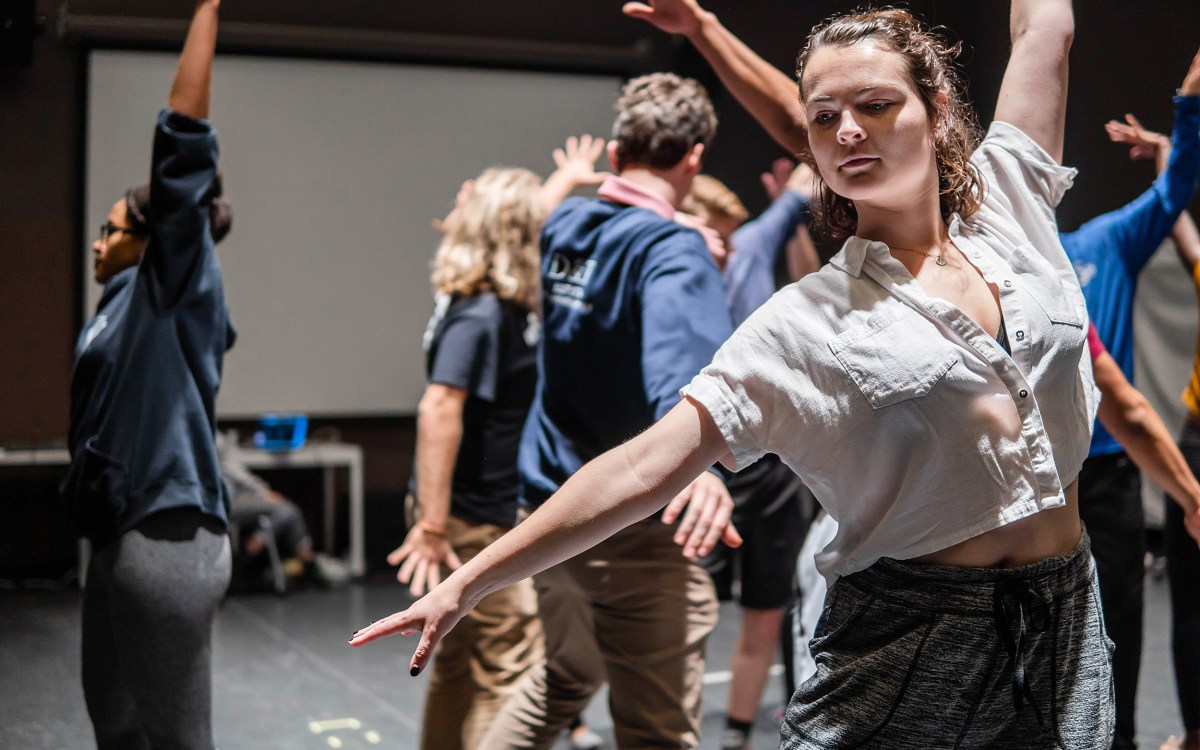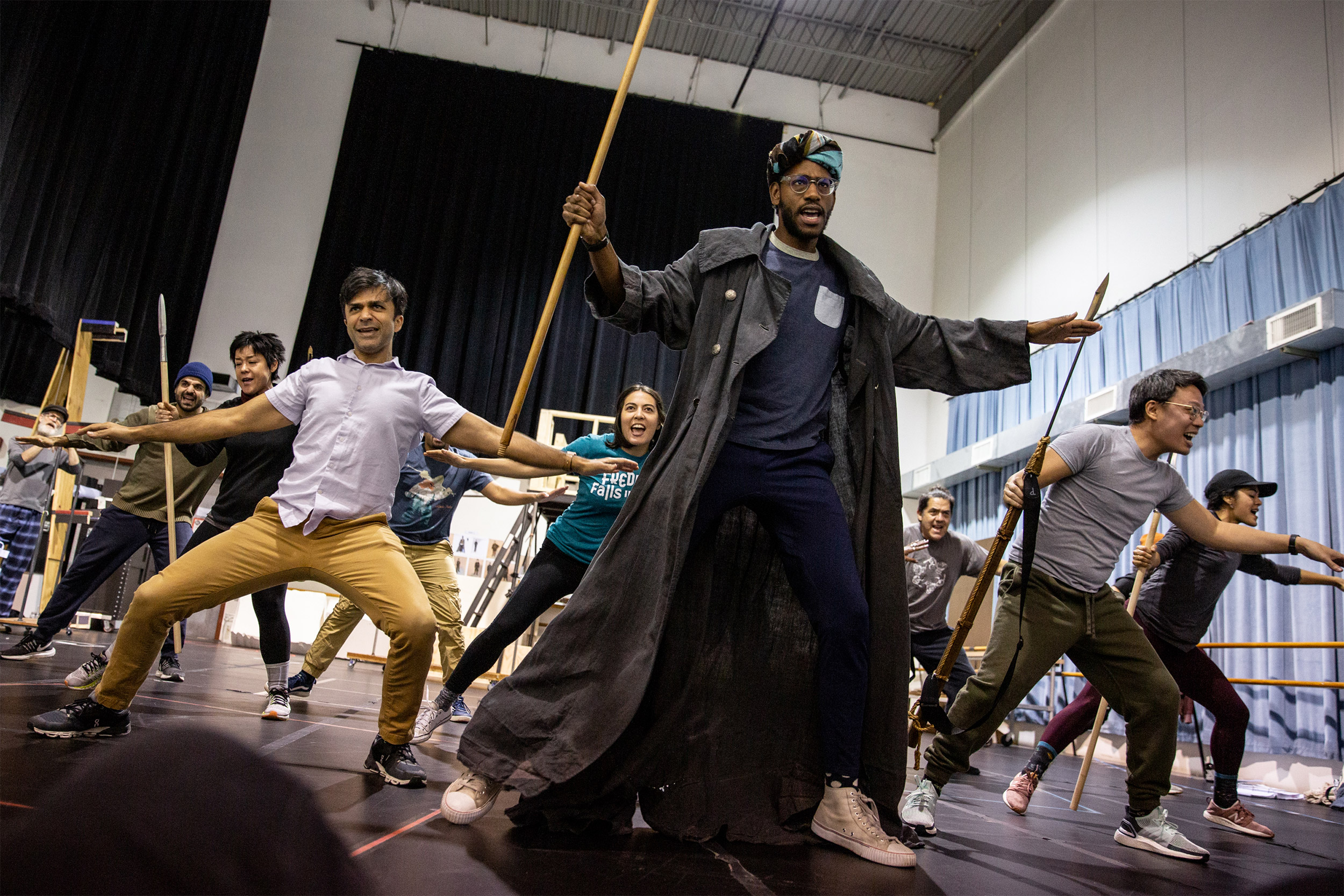
The company rehearses “Moby-Dick,” which will have its world premiere at the American Repertory Theater in a Dec. 3 preview, eight days before opening night.
Photos by Maria Baranova
Sing me Ishmael
Dave Malloy, who turned ‘War and Peace’ into a musical, takes on Melville’s classic novel ‘Moby-Dick’
“Moby-Dick,” Herman Melville’s 1851 novel about obsession (and a great white whale) might not seem like a natural for a musical. Then again, neither did Leo Tolstoy’s “War and Peace,” and that became a Broadway hit as “Natasha, Pierre & The Great Comet of 1812.” To playwright Dave Malloy, who brought “Great Comet” to the stage, such “classic weird novels” are perfect for musical adaptations, not least because they give him so much to work with.
“It’s such a great sprawling mess,” says Malloy of “Moby-Dick,” which will have its world premiere at the American Repertory Theater (A.R.T.) in a Dec. 3 preview, eight days before opening night. The production, with Malloy’s music, lyrics, book, and orchestrations, will reunite much of the “Great Comet” team, including Tony Award-winning director Rachel Chavkin, who helped develop the show, music director Or Matias, and designers Mimi Lien and Bradley King, and bring in choreographer Chanel DaSilva.
In many ways, says Malloy, “Moby-Dick” lends itself to adaptation. “The book is written more like a play at times than a novel, and other sections are like essays on fiction or different ways of cooking whales,” he enthuses. “Melville played with form. He really breaks the idea of what a novel can be, and I’m very attracted to things like that.”
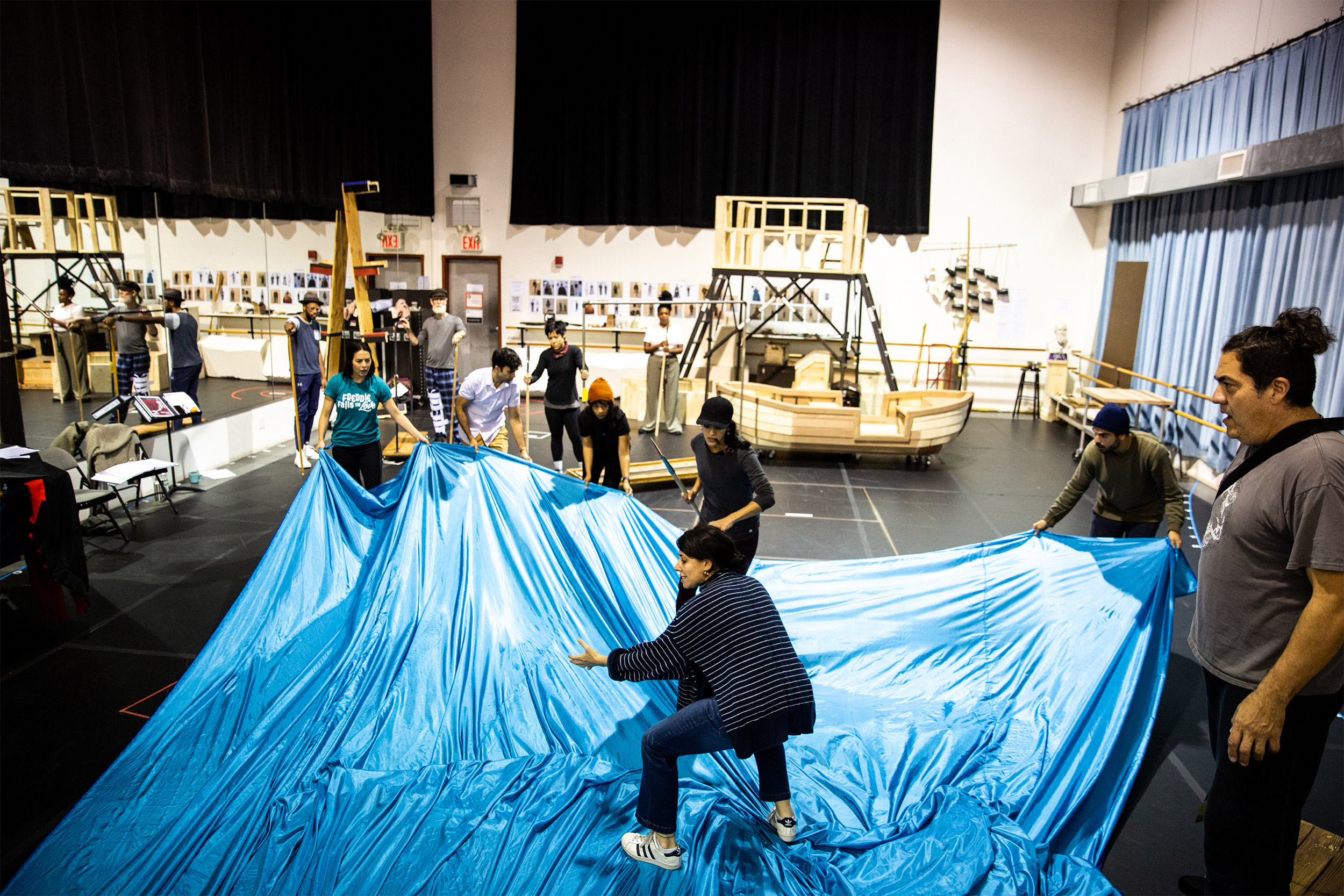
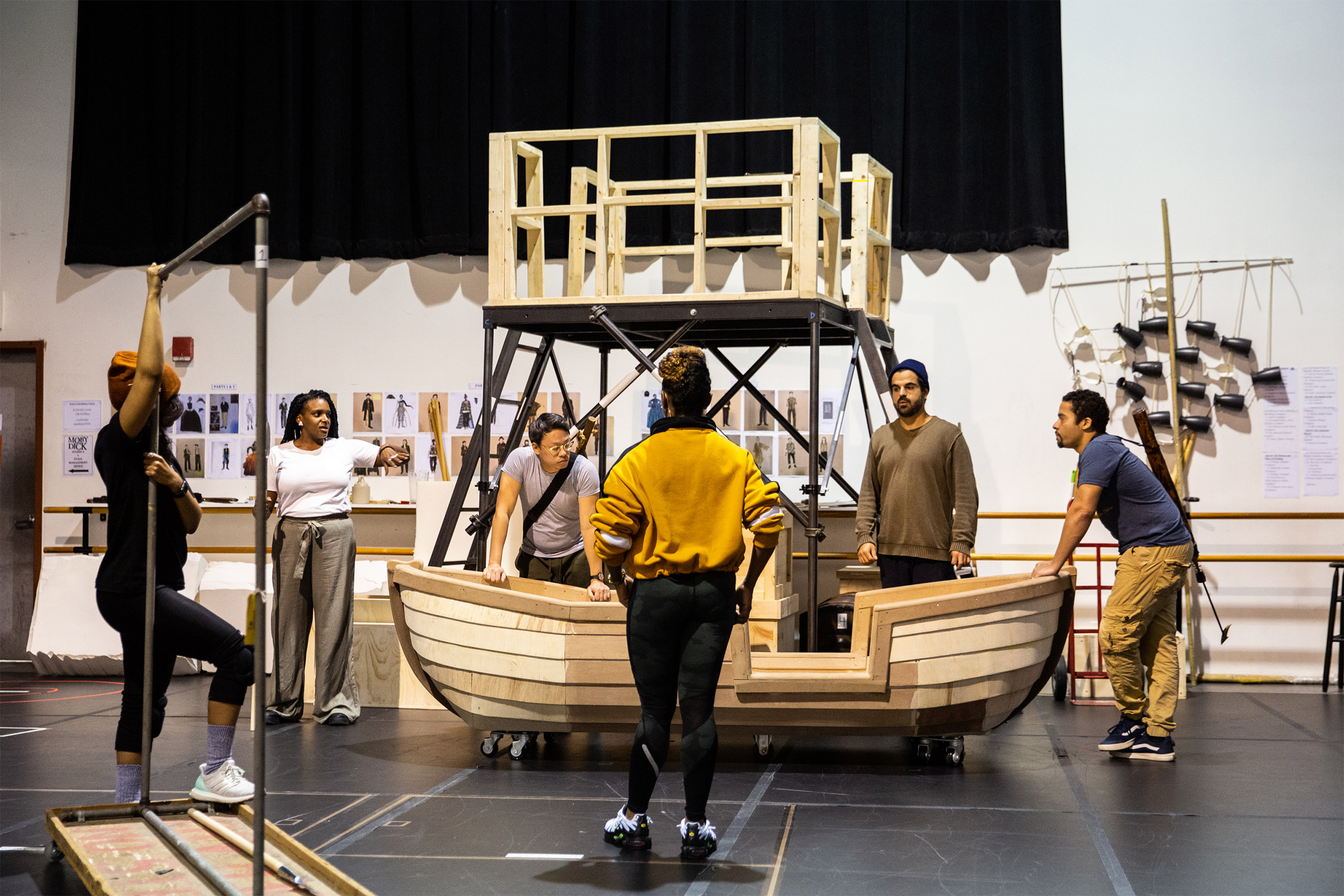
Director Rachel Chavkin works with the company on the “ocean.” Choreographer Chanel DaSilva examines the boat on set during rehearsal.
Like Malloy’s earlier hit, which had its A.R.T. debut in 2015, the musical “Moby-Dick” winnows through its genre-hopping source, extracting universal themes from the novel. Unlike “Great Comet,” however, “Moby-Dick” is a quintessentially American work, says Malloy, addressing topics from the 19th century that remain relevant today.
“One thing we’re doing is we’re very much taking an American novel and really looking at it as a way of looking at America,” he says.
One of the major themes of both the musical and the book, for example, is “talking about race in America,” says Malloy. The crew of the Pequod, Melville’s doomed ship, included Queequeg, the son of a South Seas chief; the Native American Tashtego; the Parsee harpooner Fedallah; and the African Daggoo. On the A.R.T. stage, these characters will be portrayed by a multiracial and mixed-gender cast. “Melville has this utopian vision of all these people living together and working together in harmony,” says Malloy. With Captain Ahab at the helm, however, “it also tells a story of white supremacy,” he notes. “Having this old white man lead the ship toward its doom.”
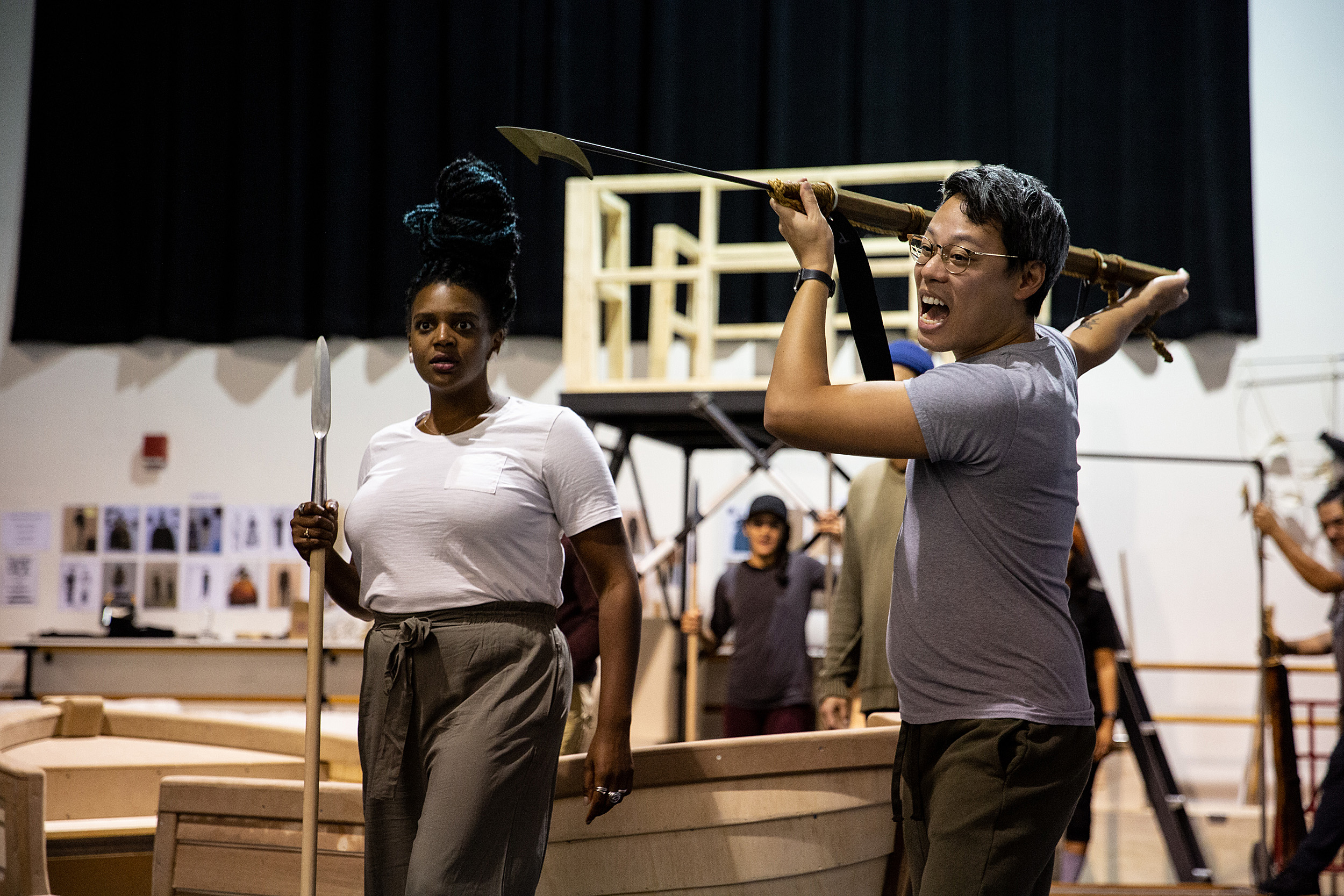
The musical also addresses humankind’s environmental impact, a concern that Melville brought up nearly 170 years ago. “There’s a whole chapter where he talks about the buffalo, and asks, ‘Will the whale go the way of the buffalo?’” Malloy says. Despite these prescient worries, he continues, Melville gets it wrong. “He’s like, ‘No, whales can escape to the North Pole.’ He was very optimistic about the whale’s chances.”
In the A.R.T. version, a darker vision will be reflected in the set and the show’s puppets, which use ocean trash as a visible reminder of what we have done to our world.
Puppets? Yes, “We have this incredible puppet designer, Eric Avery,” says Malloy. “All of the puppets are made out of recycled ocean trash, plastic bottles, and things like that.”
Trash will also be used to depict some of the more visual aspects of the book, such as the “industrial rolls of blubber” that the whalers work with after a successful hunt. Whether such detritus will depict Moby-Dick itself, Malloy won’t say.
“That would be a spoiler!” He laughs, even as he dismisses the idea that pollution is our “great white whale.”
“That’s what makes it such a great novel: the multifaceted beauty of the white whale,” he says. “It represents different things to different people on the Pequod, and we’re certainly doing that as well. To Ahab it represents God and Nature and to other people on the ship it represents white supremacy. There’s a lot going on that the white whale can represent.”



